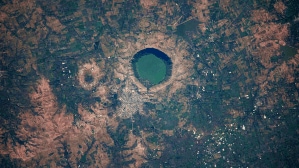The Loneliness of a Luge Star
Shiva Keshavan has just won India its biggest honour in winter sport: an Asia Cup gold medal in luge. But a country of a billion has not even blinked,nor heard of this game of dangerous speeds and sharp sledges. The story of Indian sports oddball,and his lonely race to victory.
Shiva Keshavan has just won India its biggest honour in winter sport: an Asia Cup gold medal in luge. But a country of a billion has not even blinked,nor heard of this game of dangerous speeds and sharp sledges. The story of Indian sports oddball,and his lonely race to victory.
Minus 2 degrees Celsius in Manali. As visitors from the plains sit swaddled in layers of wool,Shiva Keshavan saunters about in a thin,blue jacket,like a sleek king penguin surrounded by the clumsiness of fur-laden yaks. As you grapple with the thought that the 30-year-old athlete also whizzes down iced tracks on a sled in sub-zero temperatures,you warm up to the idea of winter sports and snow-white Olympics. Just because it doesnt snow in Delhi,(it) doesnt mean Indias not a winter sports country, says Keshavan.
His biting sarcasm seems justified,as he has just won India its biggest winter sport medal a gold in luge at the Asia Cup in Japan last month. Only a few winters ago,a former sports minister had told Keshavan that winter sports had no potential in India. Despite an annual national winter games,and registered associations of ice hockey,curling and biathlon (cross-country shooting and skiing),Indian sport seems to consider Keshavan an oddball,and his demand for support for luge almost outrageous.
The billion inhabitants of this largely tropical country are not likely to sweat over luge a sport that involves lying on the back,face up and feet first,on a torso-sized sled-board that has no brakes,nor an engine to power it,and racing down two-metre-wide icy slopes. The unit is manouevred by spikes fixed to gloves and its runners steered by a players calves and shoulders. Luge is the fastest and most dangerous of the three Olympic sliding sports,which include bobsleigh and skeleton. Lugers can reach speeds of 140 km per hour. Still,Keshavans compatriots would not recognise a luge sledge if they saw one,or know how to pronounce it right (its lyooj). They prefer hitting ball with bat.
But luge is a practised and perfected sport in several countries not just popular on the alpine slopes that the Germans,the Swiss and the Italians race on,but also among the unconventional adventurers from Bermuda and Jamaica. The latters bobsled team at the Calgary Olympics inspired the 1993 movie Cool Runnings. Shiva Keshavan could be a curiosity in India; but he prefers to be credited as something more than a freak.
When Keshavan first lined up at Nagano,Japan,in 1998 as the youngest luge Olympian at 17,Devon Harris,the Jamaican from the original bobsled quartet,sought him out and clicked a snap with the unlikely Indian on ice. When I first competed in Austria at 15,the Germans thought it was very funny that an Indian was doing luge runs. The Czechs were amused and gave me an old suit. At the opening ceremony of my first Olympics,I felt both funny and proud because I was a one-member team with a flag and a name-placard,between Great Britains 200 and Italys 250, he says. It was in Nagano,again,that he won the gold medal last month,beating local hope Takahisa Oguchi,and hauling up the Asian speed mark of 131.9 kph to 134.3 kph.
Keshavan is at home in Japan,the Asian powerhouse of winter sport; he understands the language,and respects the work ethic which makes lugers go around the tracks with digital calibers,checking for the smallest details. Beating their best especially after a long time away from the track and after an injury was satisfying, Keshavan says. Restless before the final,he says he dreamt vividly about the race the night before,down to the last detail of beating Oguchi and hitting the zone to claim Asian gold.
A mystical haze has always engulfed this sliders story on ice. Their love for adventure brought his Italian mother Rosalba and Malyali father Sudhakaran to Himachal Pradesh,where they met over 30 years ago,and opened an an Italian restaurant and an adventure sports company at Vashisht village on the upper slopes of Manali. His mother recalls baby Keshavan being blessed by Mother Teresa even before he turned one. He was in a push-push at an airport when she was racing past us,but stopped to pat his head and tell me that hell be special, she says. Keshavan jokes that as there always have been holy men passing by the hills,he has benefitted from many benedictions.
Birthdays in Manali always revolved around a sporting contest arranged by the family,and Keshavan remembers enjoying fielding in cricket,the only athletic challenge of that sport. Mountains drape an additional layer of courage around its inhabitants; children in Manali still pet collared lizards in their pockets and will happily hurl them at you for a good laugh. Rosalba,too,was never a mollycoddling mom. If Keshavan suffered from perennial cold in his early teens,he was promptly packed off further north for winter camps at Rohtang for a week. When a blizzard held them up for over 10 days,he simply skiied down from Solang to Vashisht. The terrain was tough,but more importantly I got a feel of the ice. Coming from the mountains,you learn to walk on ice,and basics like bending a little backward if you are going down a slope, he says.
He once dropped hot milk on himself in front of my eyes. But it healed quickly,and I knew then that hed always be OK, she says,a brave parent for a brave sport. (The biggest irony for a slider is that the maximum injuries caused on ice in luge are from burns,caused by friction at high speeds.)
At The Lawrence School,Sanawar,where he played hockey and did athletics,politics within the Himachal Pradesh association forced him to win his first junior national skiing title at 15 as a member of the Rajasthan team. There was little time to brood over the injustice as he was picked by Austrian world champ Gunther Lemmerer for training in luge at a camp in Europe. The year was 1996,when wheeled luges rolled down from Kalka to Panchkula for the first time. Ice training for luge runs has thereafter always been in distant Europe,while he tends to his pre-seasons physical fitness and power building in Indian climes.
Sleds were always borrowed initially,and his first second-hand was named Maruti. Both because you trust your life with it,and because it was put together with rudimentary Indian spares! he says. The one Keshavan raced at the 2010 Vancouver Olympics was dubbed Raiden,Japanese for a flash of lightning. A new sliding-sizzler is on its way after the Asian gold,courtesy his new far-sighted Russian sponsors who want to cash in on him when they host the 2014 Olympics at Sochi.
When news trickles in that Porsche is helping out its German lugers with cutting-edge technology,or that Americas national steel-makers are providing their sliders with five varieties of customised steel for different ice surfaces,Keshavan wryly reflects on Indias wealth of knowledge in engineering institutes. I wish I could do a wind-tunnel testing for the perfect body position on the sled with the Indian F-1 team,or maybe get some help from Indias top technical brains to improve my equipment, he says. The Indian federation doesnt even offer insurance nor is it recognised by the International Olympic Association for want of minimum number of state luge associations.
Keshavan goes about his routine of putting together the highly sensitive equipment for a run on his own. The luge has to be such that it cuts down on resistance in the air and on ice. We rub sandpaper on the runners endlessly and give them a mirror-like diamond coat. Even a single scratch on the carbon fibre can slow you down, he says. The spikes embedded into gloves are filed with 3- 2- and 1-micron diamond tipped-finishings for the same reason. Earlier I didnt care much about the sled,but as you compete internationally,you realise how every small detail matters to slash those micro-seconds.
Keshavan clocked his best speed in a practice run at the 2010 Vancouver Olympics and was on radio to his coach about the 149 kmph mark at Whistler,considered the worlds fastest track. The next man on the practice track after him was luger Nodar David Kumaritashvili. On the ill-fated Turn 16,the Georgian youngster lost control of his line,was thrown off the sled and died after hitting a metal pillar. Watching this from a few metres away,Keshavan was hit by the extreme dangers of his sporting indulgence. I remember tensing up around that corner during competition, he says. Hes never watched YouTube videos of the accident. I definitely dont see the sport as danger,but its something to be respected. I have an elaborate routine of praying to Hanuman before every run, he says.
But once on the track,he cant help lunging for the fast-turn. The helmets the only flimsy protection at speeds at which lugers travel,and with no brakes,speeding on ice acquires a new definition of danger. Concentration is important. And thats why these controversies Ive had fights with officials just before the events are terrible. They are energy-sapping,and they should realise its not great for my poise, he says.
The biggest myth about luge,though,is that it is all about adrenaline. Its more a meditative sport, Keshavan says.
Before a race,the player has to zap into a visualisation trip. Every run down the slope,with its straights and curves and hairpin bends,is imagined with closed eyes and imprinted on the mind,for rarely can a luger crane his neck to see where hes headed. The inside of a start house,where lugers prepare and wait before their run,is akin to a yoga meditation camp,with different sliders on their visualisation trips with hand movements some artistic,others agitated as their stationary bodies course through the pathways and simulate the run.
Minus an engine,the acceleration is generated at the start with three paddle movements,with the back and the legs working up the speed before the all-important g-force (gravitational force) can take over. It is used by lugers to thrust themselves forward and down the sliding slopes. Without an engine,we develop the acceleration of an F-1 car,and only certain fighter jets can reach the g-force that we experience, he says with pride. The back bears the brunt,and so does the neck as the body aligns itself into a streamlined position. Lifting the head slightly to see the course ahead can break speed,and at that pace,the heads a heavy whirl under the force of gravitation. The g-force you feel when a flight takes off is a fraction of what we experience at curves. Its like a stone slung to the head. It pushes the head back,and the tongue into the throat. But my worst feeling was when my visor went white from inside due to fogging,and I was literally spitting on it to clear it! he says.
Taming the g-force with shoulders and calves,sometimes it boils down to just hanging on for dear life to the sled. All this while,lugers are expected to maintain a ballerinas pointed toes for aerodynamic purposes. Its a self-operated roller coaster,with bonus speed-marks for elegance! he says. On this bamboozling journey before the sled ride,Keshavan has at most times travelled with just the sled and lots of tape,and needles and thread to repair gear. Good old jugaad, he says.
Keshavans amateurish,yet trusted training ways,despite having gone for four Winter Olympics,have relied on running along the Beas riverbed in Manali,maxing the high-altitude environs to build an endurance base,and plenty of free-hand exercise using his own body weight for his power work. His paternal grandfather is a Kalaripayattu guru in Wayanad,Kerala,and the luger has incorporated that into his regimen too. People hire low-pressure chambers for millions. Here in the Himalayas I get that for free! Im not a big fan of conventional gyms and their set-patterns, says the luger,who cant hide his sniggers at some international cricketers. Id beat some of them on push-ups, he jokes.
An ego perched on the coldest margins of Indias sports-scape could do with such boasting. After all,all he has access to are sturdy trees to work his muscles against,a patch in the Manali forests for his body-weight exercises and scores of foreigners at the hill station who he goads to join him for his 10-15 km morning runs.
Wife Namita,an LSE graduate,has busied herself in managing his career,stringing together funds,alongside running the restaurant Rose Garden,where the family grows its own herbs celery,parsley,rosemary and vegetables. On calmer days,like soon after his procession through Vashisht after the gold medal,Keshavan helps with the deli and the gardening,sprinkling ash on the parsley that aids its growth. Hes also a mountaineer,a photographer,and would like to drum, Namita says. In his spare time,he rages against the indiscriminate tourism in Manali as well as the timber mafia that has quartered its lush vegetation.
As Keshavan takes off on another sprint jog along the Beas,we struggle to keep pace. The yak-like woollens begin to feel superfluous. The king penguin,Indias premier winter Olympian and freshly minted Asian medallist,has just cracked the question in the nippy air: The best way to beat the cold is to run. Thats Shiva Keshavan demystifying cool runnings for us.



- 01
- 02
- 03
- 04
- 05




























